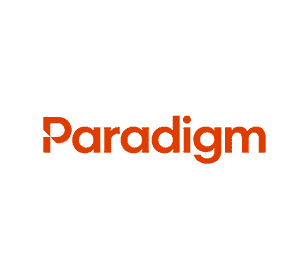So last week I’m having lunch with a business associate and he says to me, “You know, I haven’t done a lot of business in work comp. Can you explain to me how it all works?” Hello, my name is Michael Stack and I’m the CEO of Amaxx and that question is a great question, particularly for those outside of our industry and also for many, many of individuals within our industry, trying to figure out the complexity of the work comp industry itself. As you look at it from the outside, it’s extraordinarily complex but at its core, it’s extraordinarily simple.
Getting Injured Employees Proper Treatment Is Core of Workers’ Comp
You’ve got an employee and an employer, that employee gets hurt and our job is to just help them get better and get back to work. Very, very simple and to do that, you need a lot of help and you need a lot of people. One of those individuals and one of the emerging markets and emerging sub-markets even within the physician world, is the emergence of networks and specialty networks. Today I want to talk about that specialty network and what you should look for when you’re setting this up so you can get those individual employees the treatment they need and help them get back to work. Let’s talk about a couple things here.
Click Link to Access Free PDF Download
“The 6-Step Process To Determine Workers’ Comp Injury Causation”
Broad vs Narrow Networks
First thing you’re going to do is you’re going to look at whether you’re going to be using a broad versus a narrow network. The narrow network, these are the ancillary networks, these are the specialty networks that has been really quietly emerging within our industry over the last several years. It’s not a bad idea to have a combination of the two. You’ve got the broad network to cover most of your organization, and then the narrow network to bring in some of those experts in those particular fields. Now, these can be physical therapy, these can be mental health, these can ambulatory service centers, these could be chiropractic, a whole host of specialties within the medical field that put together these ancillary or specialty networks.
A couple things that I want you to just be aware of. There’s a lot that obviously goes into this, but what we’re trying to do, think about the core of what we’re trying to do is, we’re trying to get that individual employee the treatment that they need to get them back to work. Now, how do we do that? Bringing in these best medical providers, leveraging the fee schedules, the discounts on the fee schedules that can often come from these. So, a couple of things that I want you to just look for, particularly if you’re evaluating a network and evaluating whether or not to bring in some of these specialty or ancillary or networks, which again have been emerging in the last several years.
Network Coverage
First thing that I want you to look at his coverage, next is access and the last one, or at least the last one we’re going to talk about today, is credentials, so coverage, access and credentials. Can you cover the entire geographic area of where your employees are? If you’re a regional or a national employer, is there the appropriate coverage that that employee could actually get to that provider in a reasonable amount of time to get the treatment that they need?
Network Access
Number two, are they accepting new patients? Are they accepting new patients? Workers’ comp specific patients. I can’t tell you how many conversations I’ve had with injured workers where they said, “You know, I got a list of five doctors and the first three I called, they didn’t take work comp at all and the fourth one I called, he wasn’t taking any new patients, and then the fifth one did take new patients and took work comp, but he was two hours away.” Coverage and access, incredibly important to get to that fundamentally simple concept of what it is we’re trying to do in this industry, help our employees get better, help them get back to work. You got to have the right doctors that are going to help them do that.
Credentialing
And then finally, particularly as it comes to network, what credentialing are they doing? Are they board certified? Do they have X amount of experience? Do they have certain criteria as far as the outcomes that they’re delivering? What is their credentialing of the networks? Work comp can be extraordinarily complex in how it’s all put together, but remember at the core, what it is we’re trying to do. Just get our employees the treatment that they need and help them get back to work. These couple of tips in regards to providers and network can help you do that.
Again, I’m Michael Stack, CEO of Amaxx and remember your work today in workers’ compensation can help you have a dramatic impact on your company’s bottom line, but it will have a dramatic impact on someone’s life, so be great.

Author Michael Stack, CEO Amaxx LLC. He is an expert in workers’ compensation cost containment systems and helps employers reduce their workers’ comp costs by 20% to 50%. He works as a consultant to large and mid-market clients, is a co-author of Your Ultimate Guide To Mastering Workers Comp Costs, a comprehensive step-by-step manual of cost containment strategies based on hands-on field experience, and is founder & lead trainer of Amaxx Workers’ Comp Training Center
Contact: mstack@reduceyourworkerscomp.com.
Workers’ Comp Roundup Blog: https://blog.reduceyourworkerscomp.com/
©2019 Amaxx LLC. All rights reserved under International Copyright Law.
Do not use this information without independent verification. All state laws vary. You should consult with your insurance broker, attorney, or qualified professional.














 3 Criteria Determine If A Workers Comp Claim is Covered
3 Criteria Determine If A Workers Comp Claim is Covered